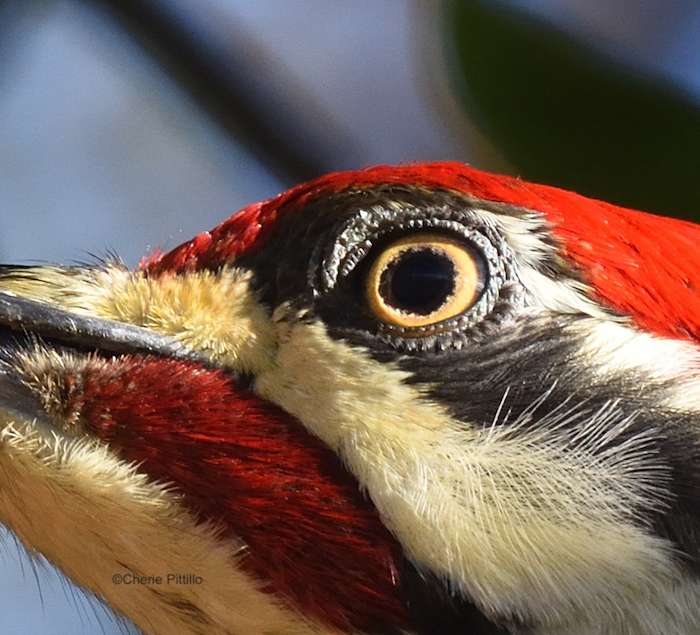
Last month The Yucatan Times published my image* of a deteriorating iris of a Pileated Woodpecker. My online research of other woodpecker pictures indicated similar irises. I requested an explanation from any eye specialists or ornithologists.
I want to thank these current or former college professors profusely for their help through written correspondence: Dr. Greg Cunningham of New York, Dr. Simon Potier of France, and Dr. Jerome Jackson of Florida.
Below is the written response from Dr. Jackson, Professor Emeritus, Florida Gulf Coast University:
“First, congratulations on the stunningly sharp photo. Yes, there are some other photos of Pileated that seem to have a similar ragged edge to the pupil — but none so sharp as yours. It looks to me as if there is no pupil. I think this bird has lost its pupil to a twig, piece of bark, or an encounter with another bird or some other animal.
Birds have a series of bones forming a ring inside the eye. It’s called the sclerotic ring. In this case, the sclerotic ring is supporting the “shape” of the eye, but the inside is gone. The irregularity of the edge is dried tissue worn partly away. The eye of a bird is within a bony chamber with the pupil being in the only open area. In this case, the eye itself is gone and the chamber apparently hollow — and the bird blind in that eye.
Why didn’t this kill the bird? Birds have a very high body temperature — eliminating many decay/disease-causing organisms. The body temperature of most birds is much higher than ours—averaging about 110 degrees. (The antibacterial impact of a high temperature can also be seen when we get sick—get a fever— the body’s way of fighting back.)
Wood chopping is a dangerous profession!”
So now “eye” know and you do too!
LET NATURE PROVIDE EYE-OPENING OPPORTUNITIES TO DISCOVER HER WONDERS!
Cherie Pittillo, “nature-inspired,” photographer and author, explores nature everywhere she goes. She’s identified 56 bird species in her Merida, Yucatan backyard view. Her monthly column features anecdotes about birding in Merida, Yucatan, and also wildlife beyond the Yucatan.
Contact: [email protected] All rights reserved, ©Cherie Pittillo
